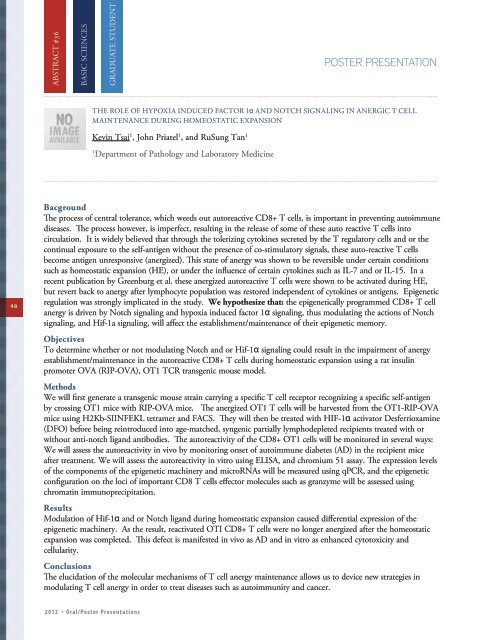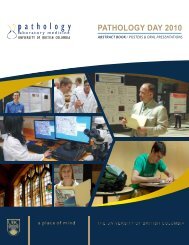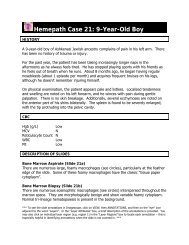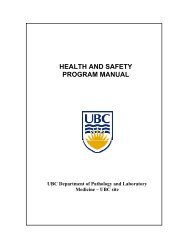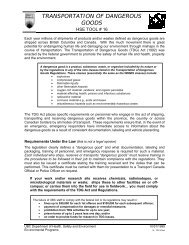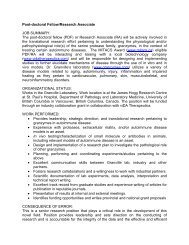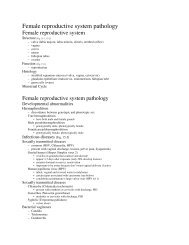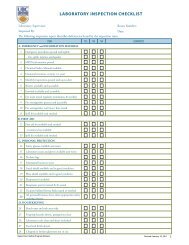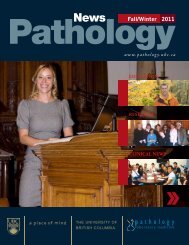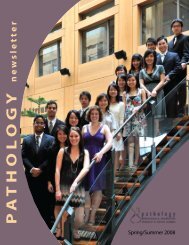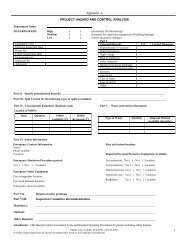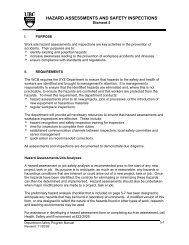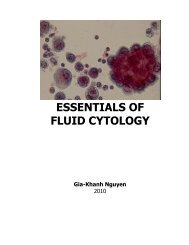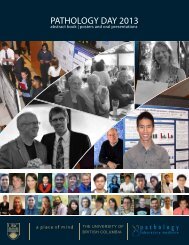Abstract Book - Pathology and Laboratory Medicine - University of ...
Abstract Book - Pathology and Laboratory Medicine - University of ...
Abstract Book - Pathology and Laboratory Medicine - University of ...
You also want an ePaper? Increase the reach of your titles
YUMPU automatically turns print PDFs into web optimized ePapers that Google loves.
ABSTRACT #36BASIC SCIENCESGRADUATE STUDENTPOSTER presentationThe role <strong>of</strong> hypoxia induced factor 1α <strong>and</strong> notch signaling in anergic T cellmaintenance during homeostatic expansionKevin Tsai 1 , John Priatel 1 , <strong>and</strong> RuSung Tan 11Department <strong>of</strong> <strong>Pathology</strong> <strong>and</strong> <strong>Laboratory</strong> <strong>Medicine</strong>48BacgroundThe process <strong>of</strong> central tolerance, which weeds out autoreactive CD8+ T cells, is important in preventing autoimmunediseases. The process however, is imperfect, resulting in the release <strong>of</strong> some <strong>of</strong> these auto reactive T cells intocirculation. It is widely believed that through the tolerizing cytokines secreted by the T regulatory cells <strong>and</strong> or thecontinual exposure to the self-antigen without the presence <strong>of</strong> co-stimulatory signals, these auto-reactive T cellsbecome antigen unresponsive (anergized). This state <strong>of</strong> anergy was shown to be reversible under certain conditionssuch as homeostatic expansion (HE), or under the influence <strong>of</strong> certain cytokines such as IL-7 <strong>and</strong> or IL-15. In arecent publication by Greenburg et al. these anergized autoreactive T cells were shown to be activated during HE,but revert back to anergy after lymphocyte population was restored independent <strong>of</strong> cytokines or antigens. Epigeneticregulation was strongly implicated in the study. We hypothesize that: the epigenetically programmed CD8+ T cellanergy is driven by Notch signaling <strong>and</strong> hypoxia induced factor 1α signaling, thus modulating the actions <strong>of</strong> Notchsignaling, <strong>and</strong> Hif-1a signaling, will affect the establishment/maintenance <strong>of</strong> their epigenetic memory.ObjectivesTo determine whether or not modulating Notch <strong>and</strong> or Hif-1α signaling could result in the impairment <strong>of</strong> anergyestablishment/maintenance in the autoreactive CD8+ T cells during homeostatic expansion using a rat insulinpromoter OVA (RIP-OVA), OT1 TCR transgenic mouse model.MethodsWe will first generate a transgenic mouse strain carrying a specific T cell receptor recognizing a specific self-antigenby crossing OT1 mice with RIP-OVA mice. The anergized OT1 T cells will be harvested from the OT1-RIP-OVAmice using H2Kb-SIINFEKL tetramer <strong>and</strong> FACS. They will then be treated with HIF-1α activator Desferrioxamine(DFO) before being reintroduced into age-matched, syngenic partially lymphodepleted recipients treated with orwithout anti-notch lig<strong>and</strong> antibodies. The autoreactivity <strong>of</strong> the CD8+ OT1 cells will be monitored in several ways:We will assess the autoreactivity in vivo by monitoring onset <strong>of</strong> autoimmune diabetes (AD) in the recipient miceafter treatment. We will assess the autoreactivity in vitro using ELISA, <strong>and</strong> chromium 51 assay. The expression levels<strong>of</strong> the components <strong>of</strong> the epigenetic machinery <strong>and</strong> microRNAs will be measured using qPCR, <strong>and</strong> the epigeneticconfiguration on the loci <strong>of</strong> important CD8 T cells effector molecules such as granzyme will be assessed usingchromatin immunoprecipitation.ResultsModulation <strong>of</strong> Hif-1α <strong>and</strong> or Notch lig<strong>and</strong> during homeostatic expansion caused differential expression <strong>of</strong> theepigenetic machinery. As the result, reactivated OTI CD8+ T cells were no longer anergized after the homeostaticexpansion was completed. This defect is manifested in vivo as AD <strong>and</strong> in vitro as enhanced cytotoxicity <strong>and</strong>cellularity.ConclusionsThe elucidation <strong>of</strong> the molecular mechanisms <strong>of</strong> T cell anergy maintenance allows us to device new strategies inmodulating T cell anergy in order to treat diseases such as autoimmunity <strong>and</strong> cancer.2012 * Oral/Poster Presentations


